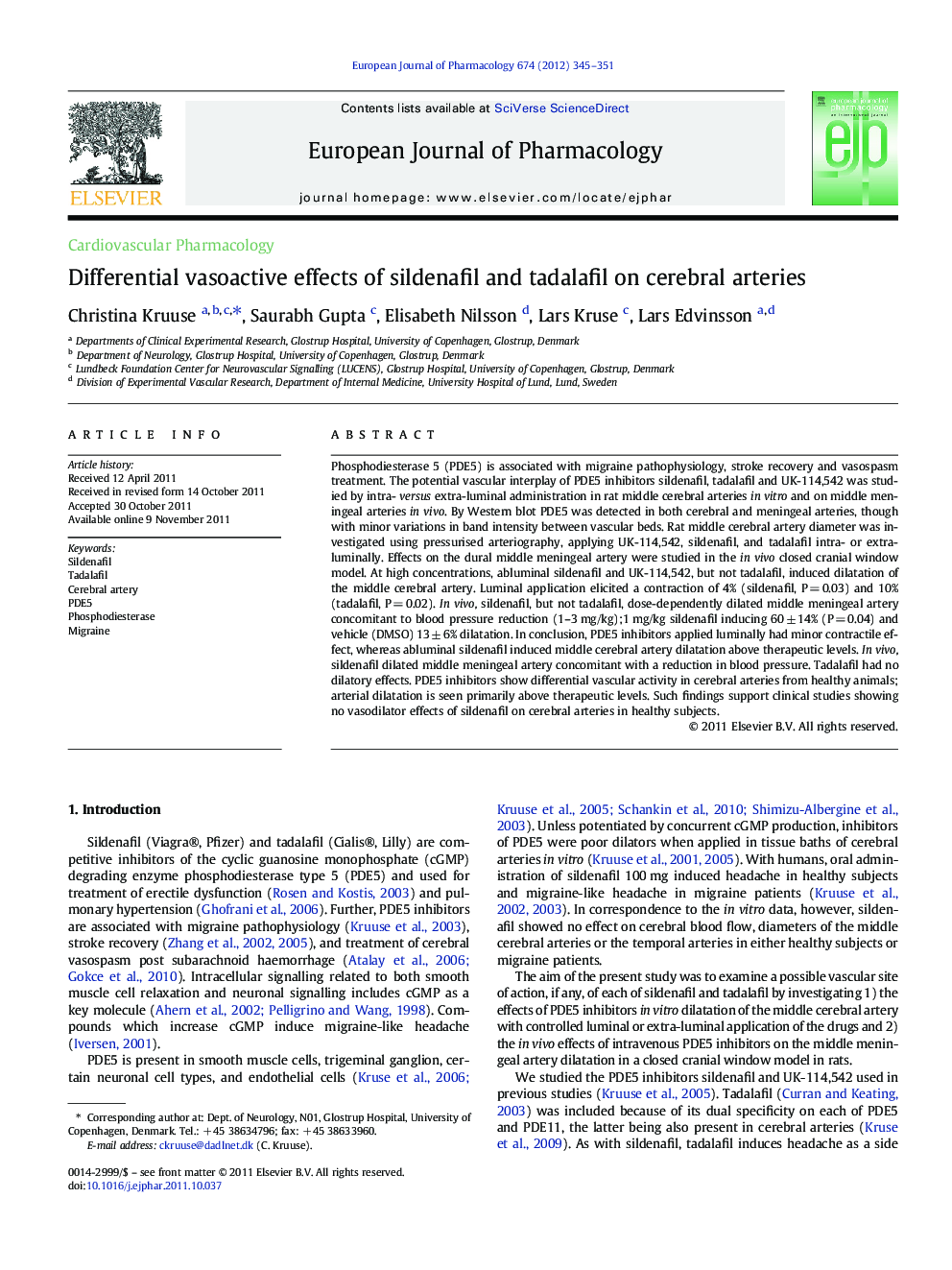| Article ID | Journal | Published Year | Pages | File Type |
|---|---|---|---|---|
| 5829882 | European Journal of Pharmacology | 2012 | 7 Pages |
Abstract
Phosphodiesterase 5 (PDE5) is associated with migraine pathophysiology, stroke recovery and vasospasm treatment. The potential vascular interplay of PDE5 inhibitors sildenafil, tadalafil and UK-114,542 was studied by intra- versus extra-luminal administration in rat middle cerebral arteries in vitro and on middle meningeal arteries in vivo. By Western blot PDE5 was detected in both cerebral and meningeal arteries, though with minor variations in band intensity between vascular beds. Rat middle cerebral artery diameter was investigated using pressurised arteriography, applying UK-114,542, sildenafil, and tadalafil intra- or extra-luminally. Effects on the dural middle meningeal artery were studied in the in vivo closed cranial window model. At high concentrations, abluminal sildenafil and UK-114,542, but not tadalafil, induced dilatation of the middle cerebral artery. Luminal application elicited a contraction of 4% (sildenafil, P = 0.03) and 10% (tadalafil, P = 0.02). In vivo, sildenafil, but not tadalafil, dose-dependently dilated middle meningeal artery concomitant to blood pressure reduction (1-3 mg/kg);1 mg/kg sildenafil inducing 60 ± 14% (P = 0.04) and vehicle (DMSO) 13 ± 6% dilatation. In conclusion, PDE5 inhibitors applied luminally had minor contractile effect, whereas abluminal sildenafil induced middle cerebral artery dilatation above therapeutic levels. In vivo, sildenafil dilated middle meningeal artery concomitant with a reduction in blood pressure. Tadalafil had no dilatory effects. PDE5 inhibitors show differential vascular activity in cerebral arteries from healthy animals; arterial dilatation is seen primarily above therapeutic levels. Such findings support clinical studies showing no vasodilator effects of sildenafil on cerebral arteries in healthy subjects.
Related Topics
Life Sciences
Neuroscience
Cellular and Molecular Neuroscience
Authors
Christina Kruuse, Saurabh Gupta, Elisabeth Nilsson, Lars Kruse, Lars Edvinsson,
